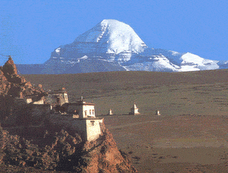http://www.nepalasiacenter.com/paper-3.html
http://www.nepalasiacenter.com/
Solution for Nepal’s Present Power Crisis
By Saroj K. Joshi, P.E., PhD
saroj@kathmandu.org
Where are we heading? We are only talking about and expecting the reduction of the number of hours of power cut per day. In fact this is not the solutionfor the present power crisis. It is already in the eleventh hour, however not too late to act. It is also time to think about a long term, permanent solution.
The recent improvements due to the power supply; about 70MW from the mid-
More crises are inevitable if the NEA and the government do not take proper actions, right now. That should include the construction of short; medium and long range hydropower generation plants as well as adequate transmission lines. All of the existing 132kV to 220 kV (where required) are highly recommended for an upgrade and the existing ring (transmission line in Kathmandu Valley) of lower-
Power Generation and the Potential Market:
There is possible power generation of the 457-
Why Nepal is a Dark State?
There are lots of reports and information, which are not only ignored but neglected, by the Nepal Electricity Authority (NEA) and the Government of Nepal that have turned Nepal into a dark state. This counts only 40% of the population, where as 60% of the people still have no access in the existing electrical grid. In other words they are still in darkness, where little solar technology may be accessible to villagers, which is still not found in significant amounts. Wind power once implemented, is now a complete failure.
So it is not only the question of the power cut crisis which we are facing but the real issue must be the electrification of the entire nation. We need to look at other strategies for adequate planning and migrating policies to bring the spread of villagers together as required for building a new Nepal. Meetings, speeches and planning will not count unless leaders, planners and concerned authorities will act together for the good of all.
The main goal of the NEA and the government should be focused on the hydropower (white gold) of different sizes as described above. Top priorities should be given to the public sector and to improving the Hydropower Development Policy of 1992. Bureaucracy and corruption not only bring power cuts but it dooms the long-
It is time to start new culture of transparency, dynamic policy and smart negotiations within the country and with foreign countries, donors, the Asian Bank, the World Bank and others for the better future of Nepal and her people. It is time to put the country first, leaders and negotiators must not put themselves first; they must put Nepal first. That is the bottom line. We shall turn Nepal into an ideal country without corruption and discrimination. It is time to unite together and to respect the differences amongst ourselves which are required to implement laws and policies effectively.
Rich Hydro-
Nepal has approximately 42,000 MW out of 85,000 MW economically feasible per some experts.
However, the present situation is that Nepal has developed only about 600 MW of hydropower; only about 40% of Nepal’s population has access to electricity. Most of the power plants in Nepal utilize run-
We should not only be talking about the 40% of people with access to electricity but all the people. We need to think and act to make electrification of the whole country possible by using hydropower as a backbone for the development of the nation. This is possible and we need to point the nation in that direction. We must leave behind 60% of the people who still do not have access to the electrical power grid. Power cuts have serious consequences as not only the 40% of people with electricity suffer but industries and the nation as a whole are in trouble. We can not take steps backward in this competitive world but we definitely need to move forward and we must not forget the backbone of Nepal is white gold and that is one of the main resources we have in boosting the economy of the country. It is time to wake-
Tentative Cost of Projects Based on Examples; Can we afford them and what shall we do?
The total power generation of the 600 MW Sun-
The NEA is also planning the generations that include the 457-
Here we are talking approximately about 1.14 billion 75 million dollars for Chamelia. We need about 150 million dollars for Kulekhani Projects. So funding is crucial and the NEA and the Nepalese government must work intensively on it.
If it can be generated within 5-
As we have the potential hydropower for development there is always a potential consumer, if the country can achieve political stability this will help move towards the industrialization of the country and then the whole scenario will change and there will be sudden increase in peak load demand that will be more than 10.2% annually. So we have to be prepared for such possible scenario also.
Recommendations for Planning and Controlling the Consumption of Energy:
Load Forecasting:
Forecasting of power requirements found a minimum of about a 6% error. I wrote my thesis, “Power System Planning” in 1986 using Nepal as an example and defended it successfully at the Kiev Polytechnic Institute, Ukraine. That time the margin of error was a lot higher, however it seems error on forecasting has been reduced. I had foreseen the current power crisis back in 1986; however, it is not too late to work on it since we still can make it, if we act swiftly in building hydro-
Leakage Control:
There are a few things we have to look at seriously; for example leakage of electricity in Nepal is about 24%-
Cluster analysis may be great tool to use for reducing leakage beside technical and other options.
An Energy Compliance Code:
An Energy Compliance Code needs to be introduced in densely populated, developed areas that may apply both Industrial/Commercial and Residential Sectors that will have some control of energy consumptions as well as help to provide only optimum energy for the consumer. This new compliance will provide not only an energy saving policy but it will also play in major role in fighting back the energy crisis.
Here is an example of the Title 24 compliance code from the state of California in the United States. The Title 24 compliance code exists both in the Electrical Engineering and Mechanical Engineering fields; it states that no electrical engineers or mechanical engineers are allowed to design lighting and energy consumptions to be more than the set rules by Title 24.
For a commercial building in an office you can use only 1.2 watt/square foot (sf), for corridor/toilet only 0.6 watt/sf, restaurant 1.6 watt/sf, lobby 1.1 watt/sf, retail store 1.6 watt/sf, this is just one simple example. Also there is a new rebate policy if someone can generate solar energy and if clients have excess energy this energy can be sent to the utility grid providing rebate policy. NEA can initiate such projects and encourage the NEA customers.
Electrical retrofit will be another issue; implementing a policy to replace all the existing lighting and encouraging clients of the NEA to begin using energy efficient light fixtures such as energy efficient fluorescent compact fixtures, bringing mandatory rules for using time-
How to Provide Power to Remote Places?
There are possibilities to begin using solar power that will definitely improve the health of villagers and give them an opportunity to have at least some light. However there is still a tough question, shall we go for solar tuki (as recommended by renewable energy groups) or should the country adopt a new policy re-
Regarding wind-
(as a pilot study) is evaluated for less than 1 MW wind power. But it is also felt that, only in the
Kagbeni area, there is feasibility of more than 25 MW of wind power. In the past we have installed two small wind-
So although hydropower/micro-
Recommendations to Resolve the Current Power Crisis:
Many experts on Nepal have tried to give immediate solutions, but here are some of my personal recommendations for the present crisis:
1. There is an existing power exchange agreement between Nepal and India in the boarder areas for up to 150 MW. It is stated that there could be an arrangement to trade seasonally as available; in the agreement, power for certain periods of the year from Nepal to the border areas for up to 150 MW. Depending on this agreement we must negotiate with India for support in increasing the power sharing range which can be gradually paid back after signing a new contract for mutual benefit with mutual agreement. We need at least another 100-
2. Alternatives can be a temporary diesel plant of about 100MW just to match the current peak demand. We should minimize the usage of diesel plants which are expensive and not environmentally friendly.
3. Identify immediately short, medium and long range potential hydropower plants that can be started immediately; such as short range projects between 100MW-
4. Attract private parties both domestic and foreign. The private sector needs to be an important stakeholder in the entire process as well as collaborating with both domestic and foreign parties.
5. An independent regulator is needed to oversee generation, transmission and distribution of electricity thorough the country. This encompasses greater importance when power is to be traded across international borders.
6. Sound regulatory and policy reforms are required to attract both national and foreign investors. Sound reforms allow for purchasing power and the selling and sharing of technology and services in India.
7. Hydropower development in Nepal needs to take advantage of well developed capital markets, the technical capacity and power markets of India as well as other nations.
8. Studies and plans for alternative energies such as wind and solar need to be conducted. But the MAJOR goal needs to be hydropower development. Nepal is the second richest in hydropower potential after Brazil but first in hydro-
References:
1. Ph.D. thesis of Saroj K. Joshi, Power System Planning, 1986, Kiev Polytechnic Institute, 1986
2. SEA Power Development Project, 1997
3. HMG/Nepal: 10th Five Year Plan (2002-
4. HMG/Nepal: Electricity Act 1992
5. HMG/Nepal: Electricity Regulation 1993
6. Nepal Solar Tukis bring light for all, Renewable energy.com, December 07, 2005
6. HMG/Nepal: Hydropower Development Policy 1992 and 2001
7. Indian Electricity Act – 2003 and Nepal India Cooperation on Hydropower (NICOH) final report
8. Wind Power Development in Kagbeni Area, Mustang from view point of Geological and Meteorological Concerns, Paper presented in fourth Nepal Geological Congress, April 9 to 11, 2004.
9. Title 24 Energy Code, California, USA, 2005 Standard


No comments:
Post a Comment